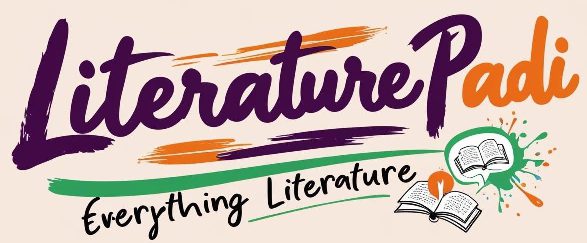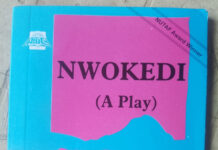📢 Follow our WhatsApp Channel for the latest literary updates!
When studying poetry, one essential concept that cannot be overlooked is the use of figurative language. Unlike everyday speech, poetic language is often indirect and suggestive. This stylistic indirection allows poets to say more than what is literally stated. It is made possible through the use of figures of speech, which are literary devices that enrich the meaning of words beyond their literal definitions.
Some of the most common figures of speech used in poetry are:
- Simile
- Metaphor
- Metonymy
- Synecdoche
- Personification
- Hyperbole
- Onomatopoeia
- Oxymoron
- Apostrophe
- Antithesis
- Irony
- Paradox
In this post, we will explore these figures of speech in detail and examine how they function.
1. Simile
A simile is a figure of speech that directly compares two different things or actions based on a shared quality or resemblance. Although the items being compared may differ in many ways, the simile highlights a specific feature or trait they have in common. This comparison is typically introduced by the words “like” or “as.”
Similes are used to create vivid imagery and evoke strong emotional responses in readers. A poet’s ability to see a connection between seemingly unrelated things—and express it in a fresh and striking way—is considered a hallmark of poetic genius.
Examples of Simile in Poetry
- “The youthful hue / Sits on thy skin like morning dew”
- “My love is like a red rose / That’s newly sprung in June”
- “I cannot sleep / But my head just stops / Like a broken down car!”
- “He talks endlessly, / And some of the things he says / Are painful and hurtful, / Like an unripe boil.”
- “The roof sizzles at the waking touch, / Talkative like kettledrums / Tightened by the iron fingers of drought.” — Niyi Osundare, Raindrum
Similes animate language and draw relatable parallels in a way that engages readers deeply.
2. Metaphor
A metaphor is closely related to a simile but takes the comparison one step further. Instead of using “like” or “as” to draw a connection, a metaphor equates two different things directly, treating them as if they are one and the same.
Where a simile might say something is like something else, a metaphor says it is that thing—blurring the lines between subject and image to deliver more powerful and condensed meaning.
Examples of Metaphor
Here are how the similes above can be turned into metaphors:
- “The youthful hue is morning dew.”
- “My love is a red rose that’s newly sprung in June.”
- “My head is a broken down car.”
- “Some of the things he says are an unripe boil.”
- “The roof is talkative kettledrums.”
Another profound metaphor can be seen in the line:
- “Beauty is a flower wrinkles devour.”
This metaphor equates beauty to a flower, subtly hinting at its fleeting nature—vivid, delicate, and ultimately perishable.
3. Metonymy
Metonymy is a figure of speech in which one object or idea is used to represent another to which it is closely related.
Unlike metaphor, metonymy doesn’t involve resemblance but association. For example, a crown can be used to represent a king, not because the two are similar in form, but because the crown is traditionally associated with royalty.
Examples of Metonymy in Literature
- “Sceptre and crown / Must tumble down, / And in the dust be equal made / With the poor crooked scythe and spade.”— James Shirley, The Glories of Our Blood and State
Here, “sceptre and crown” represent royalty, while “scythe and spade” represent the peasantry.
- “After much strife on the streets, the green berets were called in to handle the situation.”
“Green berets” is a metonym for soldiers.
- “The man who lives across the street goes after any skirt in the neighbourhood.”
“Skirt” is a metonym for a woman.
Metonymy helps writers convey complex ideas quickly by invoking culturally understood symbols or associations.
4. Synecdoche
Synecdoche is a specific type of metonymy where a part is used to represent the whole, or the whole is used to represent a part. What makes synecdoche distinct is that the part mentioned must be an integral part of the whole.
Examples of Synecdoche
- “More hands are needed to execute the task.”
“Hands” represent workers or labourers.
- “The worker finds it difficult to cater for more mouths in his family.”
“Mouths” represent people or family members.
- “I gave commands; / And all smiles stopped together.”
“Smiles” stands for people who were smiling, suggesting lives or happiness ended.
In each case, a part of the body or a part of life is used to stand for something larger.
5. Personification
Personification is the attribution of human traits, emotions, or intentions to non-human entities such as objects, animals, or abstract ideas. This figure of speech animates the non-human and makes abstract concepts more relatable and emotionally powerful.
Examples of Personification
- “Summer’s lease hath all too short a date: / Sometime too hot the eye of heaven shines, / And often is his gold complexion dimmed.” — William Shakespeare, Sonnet 18
“The eye of heaven” refers to the sun, which is described as having a gold complexion.
- “The keen wind / Knifes through his / Torn trousers / Licking his bruised knee / With rough feline tongue…” — Okot p’Bitek, Song of Ocol
The wind is portrayed as a knife and a licking creature, full of intent and character.
- “Season of mists and mellow fruitfulness, / Close bosom-friend of the maturing sun…” — John Keats, Ode to Autumn
The season is given human qualities of friendship and conspiracy.
Personification breathes life into poetry. It allows readers to feel a deeper connection to the world described.
6. Hyperbole
Hyperbole is a figure of speech that involves deliberate exaggeration for emphasis or comic effect. It is not meant to be taken literally, but it helps to convey strong emotion or make a point more vivid. Hyperbole is common in everyday speech and literature.
Examples of Hyperbole
- “I want to eat a mountain of pounded yam.”
This exaggeration expresses extreme hunger, not a literal intent to eat that much.
- “And I will love thee still, my dear, / Till a’ the seas gang dry.” — Robert Burns, A Red, Red Rose
The speaker uses hyperbole to express an enduring, impossible-to-end love — seas will never “go dry,” and rocks will never “melt with the sun.”

7. Onomatopoeia
Onomatopoeia is the use of words whose sound imitates their meaning. These words echo natural sounds and bring vivid sensory experiences to writing, especially in poetry and narrative.
Examples from Literature
- “It crack’d, and growl’d, and roar’d.” — Coleridge, The Rime of the Ancient Mariner
The words crack’d, growl’d, and roar’d mimic the harsh, breaking sounds of ice, enhancing the auditory imagery.
- “With heavy thump, / They dropp’d one by one.”
The word thump echoes the sound of bodies falling heavily.
- “Like the whizz of my crossbow!”
Whizz imitates the sharp, fast sound of a weapon released.
- “Rumble, tremble, and crack” — David Rubadiri, An African Thunderstorm
These onomatopoeic words reproduce the chaotic noise of a thunderstorm.
Onomatopoeia brings sound to the page. It makes written scenes feel more alive and immediate.
8. Oxymoron
Oxymoron is a rhetorical figure that combines two contradictory or opposing ideas in a single phrase. This contrast often produces a striking or thought-provoking effect.
Examples of Oxymoron
- Bittersweet — a feeling of both joy and sorrow
- Loving hate — a love that feels like hatred
- Pleasing pain — pain that paradoxically brings pleasure
- Resounding silence — a silence that is powerfully noticeable
- Conspicuous absence — something notably missing
Oxymoron highlights contradictions in human emotions and situations. It often reveals the complexity of experience. It forces readers to pause and reflect on how seemingly opposite feelings or ideas can coexist.
9. Apostrophe
Apostrophe is a figure of speech in which a poet directly addresses an absent person, an abstract concept, or an inanimate object as though it were present and capable of understanding. This technique brings intimacy and emotional depth to poetry.
By addressing an entity that cannot respond, the poet often expresses powerful feelings such as grief, admiration, longing, or wonder.
Examples from Literature
- “Sweet Auburn, loveliest village of the plain / Where health and plenty cheer the labouring swain” — Oliver Goldsmith, The Deserted Village
Here, the poet mourns a village that no longer exists, treating it as if it were alive and listening. This nostalgic address makes the loss feel more real.
- “O dawn / Where do you hide your paint at night…” — Susan Lwanga, Daybreak
The poet speaks directly to the dawn, asking it poetic questions. This personification deepens our appreciation of the beauty and mystery of daybreak.
- “Before you, mother Idoto, / naked I stand…” — Christopher Okigbo, Idoto
Okigbo addresses Idoto, a spiritual entity, as if present before him. The apostrophe conveys reverence, vulnerability, and spiritual connection.
Apostrophe makes abstract or distant things feel present and emotionally alive.
10. Antithesis
Antithesis is a rhetorical figure in which two contrasting ideas are placed side by side in parallel grammatical structure to create a balanced and memorable statement.
It is a powerful way of highlighting differences and creating rhythm and clarity in poetry.
Examples of Antithesis
- “The hungry judges soon the sentence sign, / And wretches hang that jury-men may dine.” — Alexander Pope
This is a striking use of antithesis. The contrast between “wretches hang” and “jury-men dine”, using parallel structure, reveals the cruelty and irony of justice served for the convenience of the powerful.
- “To err is human; to forgive, divine.”
Human weakness is contrasted with divine mercy, using a balanced clause structure.
- “For many are called, but few are chosen.”
A contrast between the invited and the selected, creating a sense of exclusivity and fate.
- “Once bitten, twice shy.”
This contrast between past hurt and present caution shows the psychological shift after an experience.
Antithesis gives poetry a sense of balance and tension. It’s especially effective for expressing conflict, irony, or truth in opposites.
11. Irony
Irony is a figure of speech in which the literal meaning of a word or statement is different, often the opposite, from the intended meaning. It creates verbal duplicity, humor, or criticism. It is often used to expose hypocrisy, absurdity, or falsehood. In the words of Hugh Holman, irony is “the recognition of a reality different from the masking reality.”
There are different types of irony, but in poetry, verbal irony—where what is said differs starkly from what is meant—is most common. This can take the form of describing a terrible situation as pleasant, or referring to a morally corrupt person as righteous. The contrast between the literal and intended meanings invites critical reflection and deeper interpretation.
Verbal irony is when the words say one thing but mean another. An example of this is when a dwarf is described as a tall “iroko” tree or a dull student is called the brightest in class.
Consider this excerpt from J.P. Clark’s “The Cleaners”:
Look at the crew
Who after each disastrous race
Take over a public place
To wash it new.
They are themselves so full
Of muck...
Here, the title “The Cleaners” is ironic. Those who claim the moral high ground to “clean” the nation are themselves corrupt and morally compromised. They replace a corrupt regime but are no better. The device draws attention to political hypocrisy, where oppressors masquerade as reformers.
Another more sophisticated form is structural irony, where the poet adopts an apparently sincere tone to express outrageous or absurd suggestions, as in Jonathan Swift’s satirical piece A Modest Proposal. This type of irony is not always easily discernible and demands careful scrutiny from the reader.
Other forms include situational irony when outcomes defy expectations; cosmic irony where fate or divine forces seem to mock human efforts; and dramatic irony: often used in drama, when the audience knows more than the characters.
12. Paradox
A paradox is a statement that appears self-contradictory or absurd at first glance but, upon closer examination, reveals a deeper truth. It is a figure of speech that shocks or surprises and then enlightens, often grounded in religious or philosophical contexts.
A paradox challenges readers’ assumptions. It provokes thought and emphasises philosophical or spiritual truths.
Take, for example, John Donne’s “Death Be Not Proud”:
Death be not proud, though some have called thee
Mighty and dreadful, for thou art not so...
One short sleep past, we wake eternally,
And death shall be no more; death, thou shalt die.
Here, the idea that death—a seemingly final force—will itself die is paradoxical. But within the Christian belief in eternal life, death is merely a transition. The contradiction resolves into a profound spiritual truth. Thus, John Donne insinuates that death is overcome through eternal life.
William Wordsworth also captures this device in “My Heart Leaps Up” with the now popular expression and often referenced example of paradox:
The Child is father of the Man;
On the surface, this is logically absurd. But understood within the Romantic belief in the moral and spiritual depth of childhood, it suggests that adult identity is shaped by childhood experience. In other words, the child’s nature shapes the adult
J.P. Clark’s “Letter from Kampala” provides a more personal illustration:
I go further in order
To get home to you.
Though it seems contradictory that one must move farther away to return home, the paradox is resolved by the understanding that journeys often require reaching their furthest points before the homeward return can begin.
Related:
- Synecdoche and Metonymy: Know the Difference
- Figures of Speech in Maya Angelou’s CAGED BIRD
- Figurative Expressions in THE LION AND THE JEWEL
- Language Use and Figures of Speech in Agostinho Neto’s THE GRIEVED LANDS OF AFRICA
- Figures of Speech in D. H. Lawrence’s BAT
- Figures of Speech in Robert Frost’s “Mending Wall”
- Figures of Speech in W. B. Yeats’ “An Irish Airman Foresees His Death”
- Figures of Speech in David Rubadiri’s “Stanley Meets Mutesa”
Final Thoughts
We have examined a variety of figures of speech and how they contribute to the richness and depth of poetic expression. The figures of speech discussed are simile, metaphor, metonymy, synecdoche, personification, hyperbole, onomatopoeia, oxymoron, apostrophe, antithesis, irony, and paradox. These figures of speech are used to express ideas, emotions, and societal critiques in a more compelling and imaginative way.
Join Our Social Media Channels:
- WhatsApp: Literature PADI
- Telegram: Literature PADI
- YouTube: @literaturepadi
- Facebook: Literature PADI











